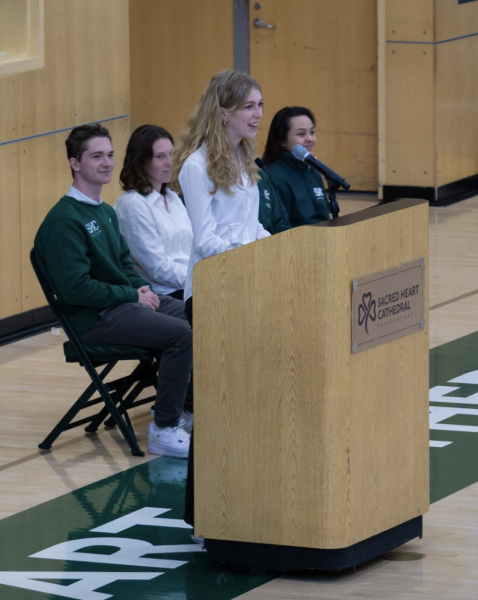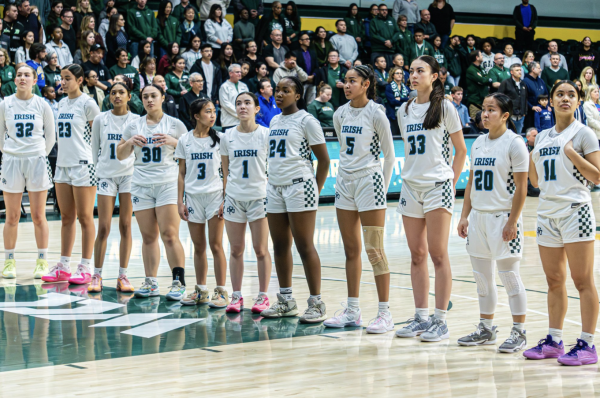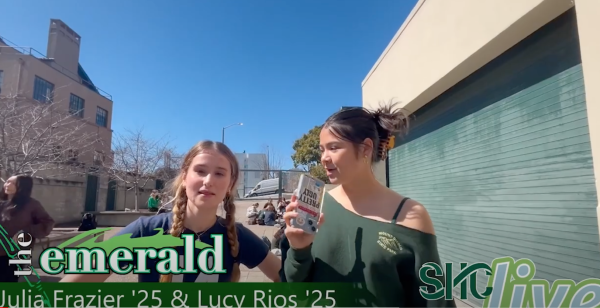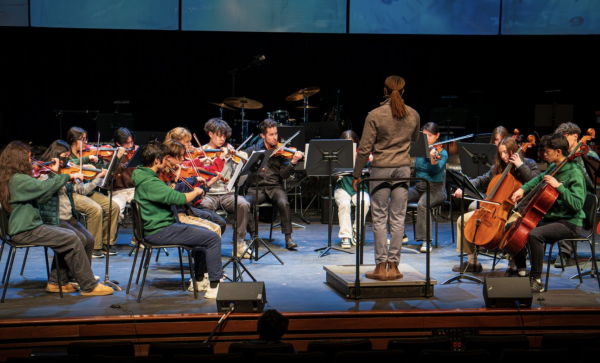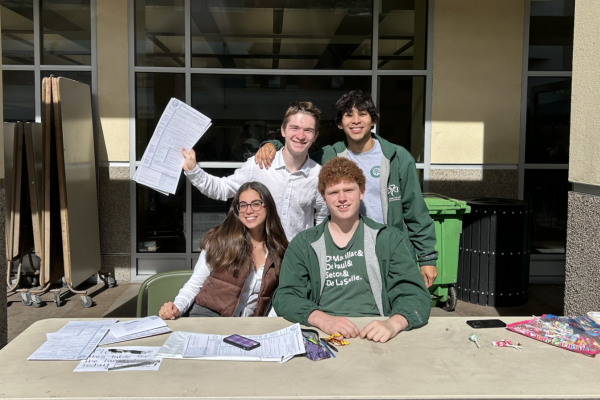2016 Winter Instrumental Music Concert: European Vacation
Thus far, the 2015-2016 school year has crossed theater and choir off the performing arts checklist, but one vital discipline recently debuted: the instrumental music program. The instrumental music concert took place last Friday and, though the poster may be simple, the preparation was quite the opposite.
The show, titled “European Vacation”, focused on Europe and its influences on world music. Unlike last year’s “Youth of the Heart”, this concert focused on Europe’s roots in American music in addition to music that is purely European. The five major components of the concert — Concert Band, String Ensemble, and Jazz Ensemble, Percussion Club and Instrumental Music — each had repertoires fitting the theme of the concert. But for these four groups, attaining and perfecting the repertoires carried challenges. Let’s take a look:
Note: Not listed here is the bagpipe solo, my personal favorite. Pretty self-explanatory, but it was certainly worth going to the show just for the two minutes of bagpipes.
Concert Band
Concert band, or Marching Band, is the group with, by far, the most exposure. Made up of winds and percussion, the Marching Band’s set list includes pop tunes like “All Right Now” and “Shipping Up to Boston” to be played at sporting events. With most songs mostly solidified from previous years, the band’s main focus thus far has been marching, under guidance of Anthony Maximov. Like the other two groups, Marching Band has been hard pressed for practice time, especially with the added pressure of marching practice. Despite this however, they continue their tradition of strong, tight performances.
String Ensemble

The String Ensemble’s repertoire of classical music is used at school events including masses as well as the performances of other art programs. The String Ensemble faced the challenge of having members with different skill levels. Cohering as a group is huge in an ensemble like Strings where the instruments can sound bad just as easily as they can sound good. But to paraphrase one cellist, once they got their heads in the game, practices went smoothly and they began to play as a coherent group.
Jazz Ensemble
The jazz ensemble, or concert band honors, draws from those in either band who wish to extend their music theory knowledge and technical skills. Under the new band teacher, the Jazz ensemble’s focus has shifted slightly. This year, more emphasis is being put on theory and its application to the genre, with assignments like writing solos and analyzing chords. Last year the approach was more focused on learning a set list, albeit one of slightly easier songs. Now with practices being taken up by Marching Band, Jazz has faced a serious time crunch in the weeks leading up to the concert. Luckily many of the pieces were solidified earlier on so theoretically three tech rehearsals should be enough to perfect them. Hopefully. Nevertheless, it’s going to be and has been tight…in all senses of the word.
Percussion Club
Percussion club is unique in that almost no one in the group is by nature a drummer. Percussion club, led by Mr. Moore draws from willing musicians who are interested in learning percussion and rhythm.
Instrumental Music

Instrumental Music presumably has had the most time to work on perfecting pieces, as their rehearsals are during the school day. As a 10th grade VPA class, skill levels in Instrumental Music vary, which will make their performance interesting and very anticipated. Last year instrumental music performed as an addition to the Concert Band for a few songs, but this year the plan is to have their own performance. I, personally, am looking forward to this part of the performance most, as this group is unique from the others in regards to its members. Despite having many beginners, instrumental music’s performances are always on a par with the other groups.
*Symphonic Band
The quietest of all the groups because it doesn’t exist. In previous years Concert Band and Strings have combined, usually for a finale, to form the Symphonic Band. Not anymore. Time constraints eliminated Symphonic Band from the concert. In an effort to fill the gap, the other bands have each added to their set lists.
So what’s with all the pressure? Timing. Two time slots (Blue period and after school), three bands (Jazz, Strings, Marching). Blue mornings during January were occupied by marching practices leaving after school as the only time slot. Thus, reading Schoology daily became a must with practice times becoming almost totally random. So now you know, though all may seem relaxed on stage, the hassle to get there has had many doubtful. Despite this, the music program has managed to piece together a performance and, based on the setlists, a good one at that.

